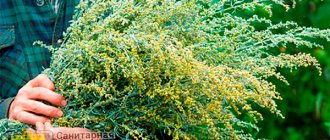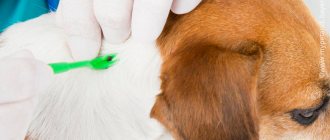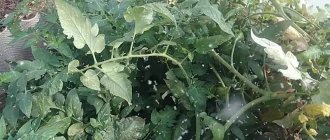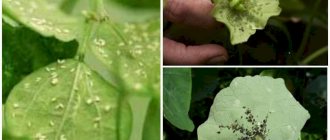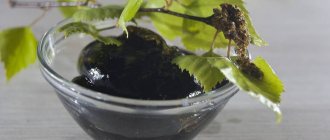Mold contains fungal spores and pathogenic bacteria, which can not only destroy fabrics and clothing, but also penetrate the human respiratory and skin tract, causing a number of unpleasant diseases. Finding it in time on clothes and bedding means protecting yourself and your family members.
The occurrence of fungus is caused by high humidity in cabinets and chests of drawers, in which under no circumstances should you put under-dried items. Even if the item seems to be dry, carefully check the waistbands, collars and cuffs of washed clothes - they need more time to dry.
All ways to remove mold from fabric
The appearance of a black spot on clothing can be caused by many factors, one of which is dampness. Due to conditions suitable for life and reproduction, mold on clothing spreads quickly.
Unfortunately, getting rid of the mold stains that it leaves on things is not so easy, especially when it comes to standard washing at low temperatures.
If a lot of chemicals that are quite aggressive towards mold will help to cope with the manifestations of fungus in the bathroom, then the fabric is not so easy to remove.
Since there are a huge variety of fabrics from which clothes are made, the means to remove mold from clothes are divided into categories. Naturally, they cannot be universal, since natural fibers are the most sensitive to chemicals, and this also applies to synthetics.
But cotton is quite resistant to both temperature and all kinds of stain removers.
So that you know how to remove mold from clothes at home, we offer you the most effective methods that will help you wash and get rid of fungal spores on your favorite things forever.
Soak. Wash. Boiling
Even if local cleaning gives a positive result, it is worth subjecting your wardrobe items to more thorough treatment (except in cases where this is not possible).
Mold can be effectively removed from clothes by hand washing or in a washing machine with pre-soaking, for which one of the following solutions is prepared:
- Boric acid is added to hot water (from 40°C) (2 tablespoons per 1 liter). The products are kept in the composition for 60 minutes.
- Half a glass of 9% vinegar is diluted in 5 liters of water and soaked for 1 hour.
- A concentrated solution is prepared from laundry soap shavings. To remove mold, the product will need 1-2 hours.
- Bleach or a special anti-mold agent is added to the washing basin according to the manufacturer's recommendations.
After soaking, the items are rinsed and washed with usual detergents. It is recommended to boil cotton and linen wardrobe items with extensive areas of dirt for a quarter of an hour with a chlorine-containing preparation, for example, “Belizna” (2 tbsp. per 1 liter of water).
Hot treatment not only effectively fights stains, but also eliminates the smell of mold on things.
We recommend that you read: How to remove mold from a stroller.
Causes of mold on clothes
Of course, the appearance of mold cannot happen by accident; there must be a reason for its occurrence. If its appearance on the walls is in no way connected with the owners, then the appearance of mold on clothes says a lot.
For example, the reason why you are wondering how to remove mold stains from fabric may be due to the fact that you do not pay special attention to drying, and as you know, fungus likes moisture.
Therefore, before removing black mold or any of its other shades, it is necessary to understand the cause of its appearance in order to begin the removal procedure precisely from the epicenter of the infection.
Let's identify the main causes of mildew on clothing to make it easier for you to identify and remove it.
Before removing mold from fabric, you need to find the cause of its appearance and act quickly, to do this, pay attention to:
- Room. If the place where your wardrobe is located has constantly damp walls, then you will soon learn about the arrival of an uninvited guest. In addition to the room itself, mold can grow in laundry bags or boxes, as well as in the closet itself.
- Drying. Sometimes, when we are busy with household chores, we put things in the closet that are not completely dry after washing. For example, a sleeve cuff or a jeans pocket could remain wet. Also, after steaming or ironing things, you can send them slightly damp to the closet. By not noticing the fact of moisture and putting the item back in the wardrobe, you give rise to its appearance.
- Machine. If you do not monitor the condition of your washing machine around the house, especially after it has been in use, then removing mold from fabric will become a pressing problem for you. Water often remains in the seal and powder container, and mold needs it for active life. By parasitizing in the washing machine, it easily switches to a new victim in the form of clothes and can subsequently move into the closet itself and infect all the clothes.
To prevent mold from returning
To prevent the fungus from settling on clothes again, it is enough to resort to the following preventive actions:
- Wash items that were in close proximity to items affected by mold, even if there are no visible stains on them.
- Dry clothes outdoors (preferably in the sun).
- In cold weather, before storing things, thoroughly clean, dry and only then place in the closet.
- If a protective cover is used, it is advisable to give preference to products made from natural fabrics that allow air to pass through and do not allow condensation to form.
- A closet in which contaminated wardrobe items are found should be emptied and treated with a disinfectant, for example, a solution of furatsilin, peroxide, or soda.
- When the wardrobe is full, moisture-absorbing bags or regular camphor are placed between things.
Thus, in most cases, mold stains are washed off well. But getting rid of them forever is possible only with regular use of preventive measures.
photo: depositphotos.com/rubchikovaa
Traditional methods for removing mold from clothes
Having figured out how there is fungus on things, you can move on to questions about how to remove mold stains on fabric if you either don’t trust modern chemicals or their use makes you feel bad (allergies, asthma, dermatitis, etc. ).
Naturally, before removing mold stains, you need to prepare a medicine for it that can be used to remove mold.
Of course, for adherents of traditional methods, you will have to choose from what can usually be found in a medicine cabinet or on the kitchen shelf.
Sometimes folk remedies can be quite unexpected and located in the refrigerator. Such an unexpected remedy is yogurt or kefir. If you are quite skeptical about the last remedy, then you still have many options with which you can remove it without harming yourself and restore the tissue in the most delicate way.
Chalk
In order to remove mold from fabric, you need to clean it thoroughly (if the damage is severe). Be sure to clean the fabric outside and not indoors.
Next, take the most ordinary school chalk (not wax) and rub it on a grater or pound it with a rolling pin.
The resulting powder must be distributed tightly over the mold-affected area. Then we put gauze on top and iron it with an iron. With this method we remove spores from cotton fabrics.
Laundry soap
The most versatile, cheapest and truly effective remedy is ordinary laundry soap. This product must be grated, then poured with warm water and the resulting shavings dissolved in it. Before removing mold completely, soap the affected part of the clothing and then immerse it in the solution.
The soaking time is about 30 minutes. Next you need to wash the item. This can be done using a washing machine or by hand, and the washing procedure can be repeated at least 2 times.
conclusions
- Mold and mildew are dangerous enemies of humans, causing damage to clothing and affecting the health of household members.
- Most kitchen and pharmacy products found in any home can be used to neutralize mold-affected areas of clothing and linen. These are lemon juice, boric acid, vinegar, laundry soap, rock salt, alcohol, aspirin, etc.
- Removing an unpleasant odor after anti-mold treatment is no more difficult than removing wax from fabric; vinegar and gel conditioner added to machine wash will help.
- Items treated against mold should be dried for at least 12 hours outdoors in the sun.
- Ironed items should not be immediately put back in their places, since they still retain a large amount of condensed moisture. Let them “breathe.”
- Strong household chemicals and chemicals are not suitable for white and delicate fabrics.
- Before removing stains from colored fabrics using chemical methods, you should test their effect on a small piece of the item. If the fabric has not changed color within half an hour, then this product can be used.
- Moisture-absorbing tablets and sachets are a great help against mold in cabinets. It is enough to put one piece on each shelf to forget about humidity for several months or even six months.
- Periodically, any room requires ventilation for at least 10-25 minutes, even if there is dampness, cold and bad weather outside.
What and how to remove mold
Undoubtedly, the option of how to get rid of mold certainly depends on you and your health. If there are no small children in your house, and you yourself have never particularly suffered from allergic reactions, then you can remove mold from fabric with aggressive chemicals that will kill the fungus outright.
It is worth noting that ready-made substances that can be used to remove mold are often not cheap. Based on this, you can still both remove mold from fabric using chemicals and save a decent amount of money. To do this you will need ammonia, peroxide or “Whiteness”.
Bleaches
Before using universal stain removers and bleaches, it is worth understanding that this is not suitable for every fabric. Therefore, before using White, Perox or Vanish, you should remember for which fabrics the product is suitable under the influence of high temperatures.
Naturally, the main thing is cotton.
Of course, substances such as Vanish are also suitable for more delicate fibers such as wool or silk, but by and large these chemicals are best used on proven items.
The main solution to mold problems is to make a paste and apply it to the area, and wash with these bleaches added to the base powder.
Ammonia
Although ammonia is a fairly delicate substance, you should test the fabric for possible color changes before using it.
After testing on the wrong side and making sure that it is suitable for the fabric, we moisten the moldy areas with ammonia.
Next, we pause for 10 minutes and send the item to be washed in the machine at the standard cycle, depending on the type of fabric. If the previously cleaned area succumbed to disinfection, the spores were not completely washed away, then repeat the procedure again.
Hydrogen peroxide
This substance can be used in both solid (tablets) and liquid form. If you want to use tablets, you must prepare a solution before removing mold from clothes.
For a solution of tablets you will need 30 peroxide tablets and 5 liters of water.
If using liquid peroxide, you will need 45 ml (3 tbsp) peroxide and a glass of water. In the first case, we soak the entire thing, and in the second we treat only the infected areas. Next, wash as usual.
How to remove from delicate materials?
Delicate fabrics usually include silk and wool. To remove mold stains from items made of delicate materials, you need to use gentle products. They will carefully clean the item from fungus.
You can use chalk, salt solution, hydrogen peroxide or turpentine. Under no circumstances should you use aggressive agents: vinegar, citric acid and soda.
- A solution of salt and ammonia . In a liter of water, dilute 6 tablespoons of salt and 2 teaspoons of ammonia. Put the water on the fire and wait until the mixture boils. Then you need to cool the solution, apply it to the stained areas and leave for a couple of hours. Then wash it in the usual way and add detergent. You cannot use a solution that has not cooled down, as these fabrics do not tolerate hot water well.
Hydrogen peroxide . The product is in every home medicine cabinet. Dilute 5-6 tablespoons of peroxide in 500 ml of water and rub the solution onto the stains. After 20 minutes, wash the items in soapy water and dry well.- Turpentine . To get rid of mold with turpentine, you need to thoroughly rub the stains with it. The difficulty is that turpentine will leave greasy marks on the products. Removing greasy stains will take some time and you will need talc or baby powder. It is necessary to sprinkle the marks with powder and leave for several hours. Then wash the product as usual.
Ways to get rid of mold fungus
As you can see, there are many products that clean fabric from mold damage. However, this is not the entire list that can be tested in practice. As mentioned above, the method should be selected depending on your body (the presence or absence of a reaction to chemicals), as well as on the type of tissue.
Undoubtedly, more aggressive chemical compounds will be less easy to remove from fabric, and they should not be used if mold spores appear on a baby’s clothing. It is best to use folk remedies such as vinegar, ammonia, chalk, peroxide, citric acid, laundry soap and even yogurt.
Domestos
If you do not suffer from the above problems and are able to easily tolerate vapors of chlorine-containing substances, then you can use the help of Domestos. Be sure to follow the dosage, because excess product can have a detrimental effect on the structure of even the densest linen or cotton fabric.
Basic procedure:
- Dilute the cleaning solution in a saucepan in a ratio of 15 ml to 2 cups of water.
- Bring the diluted solution to a boil and immerse the contaminated items.
- We wait and watch for the mold to come off the fabric and remove the item.
- Next, you need to rinse thoroughly and wash on a standard cycle or, in the case of cotton, on a high-temperature program (Cotton 90).
Is it possible to get rid of the smell?
Many of the store-bought products and folk remedies described above help get rid of not only the fungus, but also the characteristic musty odor. If washing does not help, and the clothes continue to emit unpleasant odors, you can use more potent cleaning products... or put the clothes in the freezer.
How it works? Items are pre-packed in plastic or placed in a tightly sealed bag, and then placed in the freezer of the refrigerator overnight. Cold kills spores and also eliminates musty odors.
Sometimes you may need to additionally remove the odor.
You can also use special products produced by household chemical manufacturers. It is easy to find a variety of odor absorbers and neutralizers for wardrobes and shoe cabinets on sale.
Prevention
Now you know how to remove mold stains from your favorite things. To prevent the reappearance of an unexpected guest, you should follow several rules, such as:
- Try to ventilate the room in which things are located.
- When we put clothes in the closet, be sure to check for the presence of moisture.
- Use special moisture-absorbing bags in your wardrobe.
- Wipe off water from your washing machine after use.
- Do not put dirty items in the washing machine drum for storage until the next wash.
- Wash the bowl at high temperature using bleach.
From white
Removing mold from white products is a difficult and complex process. It may require the use of not one, but several products that will gently clean the item from stains and leave no traces.
How to do it:
- It is necessary to pour hot water into a basin and add 1-2 tablespoons of washing powder.
- Rub mildewed areas with laundry soap.
- Immerse the products in a bowl of water for half an hour.
- After the specified time, you need to wash the item in a machine with the addition of a hydrogen peroxide solution. Add half a liter of water and a tablespoon of peroxide to the soap container.
Cleaning the stroller
If mold appears on clothes, we have discussed how to get rid of it, now you can treat other surfaces, such as a baby stroller. Children's vehicles are most susceptible to mold growth. Naturally, in order to protect your child, you will have to take a number of measures that will remove this scourge.
You need to make a mushy paste using baking soda and plain water. We apply this paste to the moldy areas and remove the spores with a brush. You can also use citric acid or vinegar, and for a powerful effect we remove mold by treating the stroller fabric with turpentine.
- Samsung washing machine error h1
- SMA Samsung error codes
Use of special means
To get rid of mold on clothes, you can use Belizna, Vanish or Domestos.
White
“Whiteness,” also known as labarrack water, is an aqueous solution based on sodium hypochlorite. Not all fabrics can be washed with this product.
Restrictions:
- Do not use for washing black and colored fabrics. The material may lose color.
- Restrictions on the use of chlorine may be indicated in the instructions for the washing machine.
- Use with caution when cleaning clothes with metallic decor. Buttons or cufflinks may become dark.
- Fabric or non-woven material may be susceptible to chlorine and chloride compounds.
“Whiteness” is a strong remedy, but it is not suitable for all types of fabrics.
Important! “Whiteness” is only suitable for white wardrobe items.
Carefully study the labels on clothing. If there are marks with a crossed out triangle or a triangle with two lines parallel to one of the sides, you cannot use “Whiteness”!
Algorithm of actions:
- Make sure the bleach is suitable for the machine and fabric.
- If possible, remove metal elements from clothing.
- Soak the items in a bowl of water, add half a glass of the product.
- Leave for several hours.
- Place it in the washing machine as usual.
- Rinse and dry in fresh air.
Note! If there are non-removable metal decorative elements, it is worth reducing the con.
Vanish
Vanish Oxi Action is a universal stain remover that copes well with all types of stains, including pathogenic microflora. The product does not contain optical brighteners, so it can wash any fabric, light or colored. The only exception is woolen items and silk items.
Advantages:
- Suitable for colored and light-colored fabrics.
- Suitable for machine and hand wash.
- High efficiency.
- Allows you to remove any type of dirt.
- Low cost.
- Economical: one glass is enough for three machine washes.
“Vanish” has both advantages and disadvantages.
Flaws:
- Do not use with products containing chlorine compounds.
- Not suitable for wool and silk.
Important! Do not use with products containing chlorine and its compounds.
Domestos
Domestos, like Vanish, is a universal stain remover. Including effectively eliminating mold. However, the product contains sodium hypochlorite, so it is worth considering the “chlorine” restrictions described in the “Whiteness” section.
Domestos should be used with caution and take into account the limitations.
Useful tips
Some tips will help you remove mold from fabrics without problems. For example:
- Sort things by fabric quality and type of material. You should not process items made from natural and synthetic fabrics at the same time.
- It is better to test the effect of the product on a small area. A strong composition can ruin the appearance of fabric products.
- The concentration of the product should not be high, but the effect of the substance still needs to be controlled.
- The main thing is to accurately observe the proportions of the components that make up the recipe.
- After treating problem areas, they must be washed, rinsed and ironed, observing the temperature regime.
- Bed linen must be boiled with bleach. This is the only way to completely get rid of fungal spores.
- Fabric softener, as well as another product such as Vanish, will help get rid of the unpleasant odor of mold control products.
- If clothes are affected by fungal spores and give off an unpleasant odor, then it is not advisable to wear such things. The fungus is dangerous because it spreads spores in space, which can then easily enter the lungs. If the defeat is large-scale, then such things should be thrown away immediately, without any regret. It is better to avoid such situations.
Using Lemon to Clean Clothes and Prevent Fungal Stains
How to remove traces of mold from the surface of clothing if an unstable dye was used in the production of the item. In this situation, lemon juice will help perfectly. To remove stains, treat the stained areas with lemon juice and after a few minutes sprinkle with table salt. After the treatment area has dried, contaminated clothing should be washed in the usual way using washing powder. Housewives should remember that mold fungi are afraid of exposure to an acidic environment, so instead of lemon juice you can use acetic acid
It should be noted that when working with this chemical compound, precautions should be taken so as not to harm the body during its use
Lemon for cleaning mold from clothes
To prevent the appearance of specific mold stains and prevent the appearance of a moldy smell on things, you should follow certain rules for storing clothes:
- Molds love moist and warm environments. For this reason, before storing items, you should make sure that they are completely dry. Even after ironing, items may still have a high level of moisture, so it is recommended to wait a while after ironing before placing items in a closet or chest of drawers.
- When storing things in a closet, it is recommended to place them in moisture-absorbing special bags.
Mold habitats
- Wardrobes and chests of drawers should be aired out periodically.
- To prevent mold growth, it is prohibited to store clean and dirty clothes together.
- You should strive to ensure that the air in the room does not have a high level of humidity.
Vanish for washing clothes
- You should not install the wardrobe very close to the wall, as it creates favorable conditions for mold growth. The distance from the back of the cabinet to the wall should ensure normal circulation of air masses.
If fungal infection of clothing does occur, then to clean the affected fabrics you can perfectly use a product that is available to almost every housewife. Such a remedy is “Vanish”. The fact is that mold is a very sensitive fungus to the effects of oxygen-containing stain removers. By the way, “Vanish” is an excellent remedy that allows you to get rid of fungal contamination on the surface of colored fabrics.
Consequences of the appearance
Mold not only ruins clothes, but can also be harmful to your health. So, when it comes into contact with the skin, it causes an allergic reaction: itching, rashes, and constant sneezing.
When left on linen for a long time, mold penetrates deeper into the structure and it becomes more and more difficult to remove it from the fabric. In severely neglected cases, it is easier to throw away the item than to restore it.
Very interesting video about mold:
Once mold appears in an apartment, it begins to spread its spores and this can lead to infection of other things with harmful fungus.
